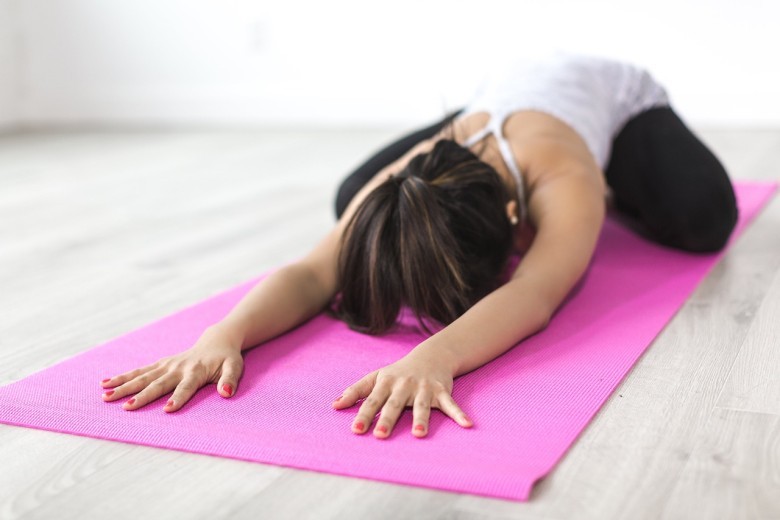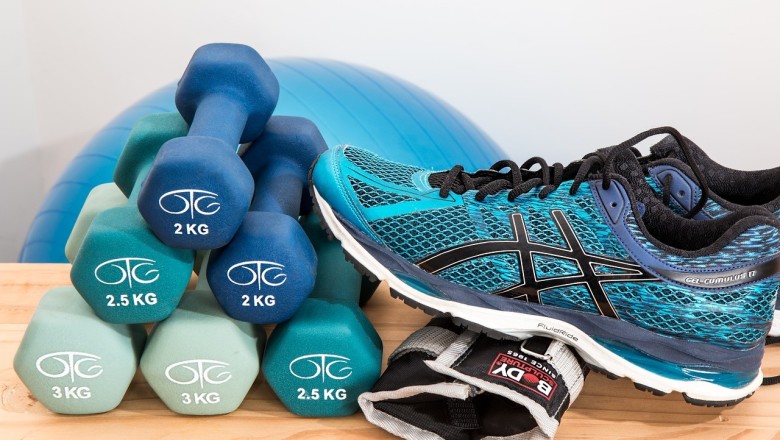
Understanding Fitness
Fitness is a state of health and well-being that allows individuals to perform aspects of sports, occupations, and daily activities without undue fatigue. It is achieved through proper nutrition, moderate-vigorous physical exercise, and sufficient rest. Fitness is not just about the absence of disease or infirmity; it is a proactive pursuit of well-being.
The Components of Fitness
Fitness encompasses several key components, each contributing to overall health and function:
Cardiovascular Endurance
This is the ability of the heart and lungs to work together to provide the needed oxygen and fuel to the body during sustained workloads.
Muscular Strength
This refers to the amount of force a muscle can produce with a single maximal effort.
Muscular Endurance
The ability of a muscle or group of muscles to sustain repeated contractions against a resistance for an extended period.
Flexibility
The range of motion available at a joint.
Body Composition
The amount of fat mass compared to lean muscle mass, bone, and organs.
The Role of Workout Routines
Workout routines are structured plans of physical activities designed to improve one or more components of fitness. A well-designed workout routine can help individuals achieve specific fitness goals, whether it's weight loss, muscle building, improved endurance, or overall health enhancement.
Consistency and Progression
Regularly following a workout routine ensures consistency in exercising, which is key to making progress. Over time, the body adapts to the demands placed upon it, and a structured routine allows for progressive challenges to continue improvement.
Balance and Variety
Workout routines can provide a balanced approach to fitness by incorporating a variety of exercises that work different parts of the body. This not only prevents boredom but also reduces the risk of overuse injuries.
Efficiency
A well-planned workout routine can help individuals make the most of their time. By focusing on specific exercises and managing rest periods, one can maximize the effectiveness of their workout within a limited time frame.
Goal Orientation
Workout routines are often tailored to specific goals. Whether it's preparing for a marathon, increasing squat strength, or improving flexibility, a routine directs efforts towards achieving these objectives.
Safety and Injury Prevention
Structured routines encourage proper form and technique, which are crucial for preventing injuries. They also allow for gradual increases in intensity, which can protect the body from being pushed too hard too quickly.
The Psychological Benefits of Workout RoutinesMotivation
Having a clear plan can serve as a powerful motivator. Seeing progress as one follows a routine can further reinforce the commitment to fitness.
Structure and Accountability
A routine provides structure to one's fitness journey and can help hold individuals accountable. It's easier to stick to a plan when it's laid out in a structured format.
Stress Reduction
Regular physical activity has been shown to reduce stress and anxiety. A routine can help individuals manage their stress levels by providing a consistent outlet for releasing tension.
Improved Mental Health
Exercise is not only beneficial for the body but also for the mind. It can boost mood, improve sleep, and enhance cognitive function.
In summary, fitness is a multifaceted concept that encompasses various physical and mental components. Workout routines play a crucial role in achieving and maintaining fitness by providing structure, consistency, and a path to reach personal health goals. They are essential for anyone looking to kickstart their fitness journey effectively.
Setting Realistic GoalsUnderstanding the Importance of Realistic Goals
When embarking on a fitness journey, it's crucial to set goals that are achievable and measurable. Realistic goals provide a sense of direction and purpose, making it easier to stay motivated and track progress. They should be specific, time-bound, and tailored to your personal fitness level and lifestyle.
How to Set SMART Goals
SMART is an acronym that stands for Specific, Measurable, Achievable, Relevant, and Time-bound. This framework helps in setting clear and attainable goals.
- Specific: Define what you want to accomplish with as much detail as possible.
- Measurable: Determine how you will track your progress and measure success.
- Achievable: Ensure that the goal is within your physical capabilities and realistic given your current level of fitness.
- Relevant: Choose goals that are important to you and that will have a positive impact on your life.
- Time-bound: Set a deadline for your goal to create a sense of urgency and help maintain focus.
For a beginner, realistic goals might include running a certain distance without stopping, completing a full set of push-ups or pull-ups, or attending a specific number of workout sessions each week. These goals should reflect an understanding of your starting point and be designed to push you slightly beyond your comfort zone without risking injury or burnout.
Understanding Your BodyRecognizing Your Starting Point
Before setting goals, it's important to assess your current fitness level. This might involve recording your weight, body measurements, or performing a baseline fitness test. Knowing your starting point will help you set appropriate goals and measure your progress accurately.
Listening to Your Body
Paying attention to how your body responds to exercise is key. If you experience pain or discomfort beyond the normal muscle soreness associated with a new workout, it may be a sign to adjust your routine. Rest and recovery are as important as the workouts themselves.
The Role of Genetics in Fitness
Genetics can play a role in how quickly you see results, where you gain muscle, and how your body responds to different types of exercise. While you can't change your genetics, understanding them can help you tailor your workout routine to suit your body's tendencies.
Adapting to Changes and Plateaus
As you progress in your fitness journey, your body will adapt to the demands you place on it. This means you may hit plateaus where progress seems to stall. When this happens, it's important to reassess your goals and adjust your workout routine to continue challenging your body.
Importance of Nutrition and Hydration
Understanding your body also involves recognizing the importance of proper nutrition and hydration. Fueling your body with the right nutrients and staying hydrated can significantly impact your energy levels, recovery, and overall performance.
Consulting with Professionals
If you're unsure about how to assess your fitness level or how to set realistic goals, consider consulting with a fitness professional. Personal trainers, nutritionists, and even your healthcare provider can offer valuable insights into creating a workout routine that aligns with your body's needs and your fitness objectives.
The Fundamentals of Designing a Workout RoutineUnderstanding Your Goals
Before designing a workout routine, it's crucial to identify your fitness goals. Are you aiming to lose weight, build muscle, increase endurance, or improve flexibility? Your goals will dictate the type of exercises, the intensity, and the frequency of your workouts. For weight loss, a combination of cardio and strength training is effective, while muscle building requires a focus on resistance training.
Assessing Your Fitness Level
An honest assessment of your fitness level helps in creating a routine that is challenging yet achievable. Beginners should start with lighter weights and fewer repetitions, gradually increasing as strength and endurance improve. Incorporating a fitness assessment, such as a timed mile run or counting the maximum number of push-ups you can perform, can provide a baseline to measure progress.
Balancing the Workout Components
A well-rounded workout routine includes cardiovascular training, strength training, flexibility exercises, and balance training. Cardiovascular exercises like running, cycling, or swimming improve heart health. Strength training, using weights or bodyweight exercises, builds muscle and bone density. Flexibility exercises such as stretching or yoga enhance the range of motion, and balance exercises help prevent falls and improve core strength.
Structuring Your Routine
Structure your routine by dividing it into warm-up, main workout, and cool-down phases. The warm-up should consist of light aerobic activity and dynamic stretching to prepare the body for exercise. The main workout is where you perform the core exercises targeting different muscle groups. The cool-down phase should include static stretching to help muscles recover and reduce soreness.
Frequency and Duration
The American College of Sports Medicine recommends at least 150 minutes of moderate-intensity cardio per week, or 75 minutes of vigorous-intensity cardio, along with two or more days of strength training. Beginners might start with shorter sessions and gradually increase the duration as stamina builds. Rest days are essential for recovery and should be incorporated into your routine.
Progression and Variation
To avoid plateaus and maintain progress, gradually increase the intensity of your workouts by adding more weight, increasing reps, or incorporating more challenging exercises. Varying your routine every few weeks keeps the workouts interesting and works different muscle groups, reducing the risk of overuse injuries.
Listening to Your Body
Pay attention to your body's signals. If you feel pain or excessive fatigue, it may be a sign to reduce the intensity or take a rest day. Proper hydration, nutrition, and sleep are also vital components of an effective workout routine.
Safety and Injury Prevention
Safety should always be a priority when designing a workout routine. Use proper form and technique to reduce the risk of injury. If you're unsure about how to perform an exercise, consider hiring a certified personal trainer for guidance. Equipment should be appropriate for your fitness level and well-maintained to ensure safety during workouts.
Tracking Your Progress
Keep a workout log to track your exercises, sets, reps, and weights. Monitoring your progress helps in staying motivated and can inform adjustments to your routine. Celebrate milestones and improvements, no matter how small, to keep up your motivation.
By following these fundamentals, you can design a workout routine that is tailored to your individual needs, preferences, and goals, setting the stage for a successful and sustainable fitness journey.
Essential Exercises for a Balanced WorkoutCompound Movements
Compound exercises are multi-joint movements that work several muscles or muscle groups at one time. A well-rounded workout routine will include a variety of these to ensure that you are efficiently working your entire body.
Squats
Squats are a fundamental exercise that targets the quadriceps, hamstrings, glutes, lower back, and core. They can be performed with bodyweight, dumbbells, kettlebells, or a barbell. Proper form is crucial to prevent injury and maximize effectiveness.
Deadlifts
Deadlifts are another powerful compound movement that engages the back, glutes, hamstrings, and core. They can be performed using a barbell or dumbbells. It's important to keep the back straight and lift with the legs to avoid strain.
Bench Press
The bench press is a key exercise for developing the chest, shoulders, and triceps. It can be done with a barbell or dumbbells on a flat, incline, or decline bench to target different areas of the chest.
Pull-Ups/Rows
Pull-ups and rows are essential for a strong back and biceps. Pull-ups can be challenging for beginners, so assisted pull-up machines or resistance bands can be used. Rows can be done with dumbbells, barbells, or cable machines.
Overhead Press
The overhead press primarily works the shoulders and triceps. It can be performed standing or seated, with dumbbells or a barbell. Keeping the core engaged is important for stability and safety.
Isolation Movements
Isolation exercises focus on one muscle or muscle group and involve only one joint. These exercises are useful for targeting specific muscles that may need extra attention.
Bicep Curls
Bicep curls isolate the biceps and can be done with dumbbells, barbells, or resistance bands. They can be performed standing or seated, with a variety of grips to target different parts of the biceps.
Tricep Extensions
Tricep extensions target the triceps and can be done using dumbbells, a barbell, or a cable machine. They can be performed standing, seated, or lying down.
Leg Extensions and Curls
Leg extensions focus on the quadriceps, while leg curls target the hamstrings. These are typically performed on machines and are useful for strengthening these muscle groups.
Calf Raises
Calf raises work the calf muscles and can be done on a step or with a calf raise machine. They can be performed with bodyweight or with added resistance.
Core Strengthening
A strong core is vital for overall fitness and injury prevention. Core exercises should be included in every workout routine.
Planks
Planks are a static exercise that strengthens the entire core. Variations include the forearm plank, side plank, and plank with leg lifts.
Russian Twists
Russian twists target the obliques and can be done with or without added weight. It's important to twist from the torso rather than the arms to engage the core properly.
Leg Raises
Leg raises work the lower abdominals and can be performed lying down or hanging from a bar. They should be done with controlled movements to avoid lower back strain.
Flexibility and Mobility
Incorporating flexibility and mobility exercises into your routine can improve range of motion and reduce the risk of injury.
Stretching
Regular stretching of all major muscle groups can enhance flexibility. Static stretches should be held for at least 20-30 seconds for maximum benefit.
Yoga/Pilates
Yoga and Pilates are excellent for improving flexibility, balance, and core strength. They can also aid in muscle recovery and relaxation.
Balance and Coordination
Exercises that improve balance and coordination are important for functional fitness and can enhance performance in other exercises.
Single-Leg Exercises
Single-leg exercises, such as lunges or single-leg deadlifts, challenge balance and coordination while working the legs and core.
Stability Ball Workouts
Using a stability ball for exercises like push-ups, planks, or ball squats can improve balance and engage stabilizing muscles.
Cardiovascular Exercises
Cardiovascular exercises are crucial for heart health and endurance. They can also aid in weight loss and energy levels.
Running/Cycling
Running and cycling are classic cardio workouts that can be adjusted in intensity and duration to suit fitness levels.
High-Intensity Interval Training (HIIT)
HIIT involves short bursts of high-intensity exercise followed by rest or low-intensity periods. It's effective for burning calories and improving cardiovascular fitness.
Jump Rope
Jumping rope is a simple and effective way to incorporate cardio into your routine. It improves heart health, coordination, and agility.
Incorporating Cardio, Strength, and Flexibility TrainingUnderstanding the Three Pillars of Fitness
Cardiovascular (cardio), strength, and flexibility training are the three core components of a well-rounded fitness routine. Each type of training serves a unique purpose and contributes to overall health and fitness.
Cardio Training
Cardio training, also known as aerobic exercise, is essential for improving cardiovascular health. It involves sustained, rhythmic activities that increase heart rate and breathing. For beginners, incorporating cardio can start with activities such as walking, jogging, cycling, or swimming. Aim for at least 150 minutes of moderate-intensity or 75 minutes of high-intensity cardio per week, as recommended by health organizations.
Starting with Cardio
Begin with moderate activities and gradually increase intensity. A good starting point could be a brisk 30-minute walk, five days a week. Over time, you can incorporate intervals of increased pace or introduce new forms of cardio such as dance classes or rowing.
Strength Training
Strength training, or resistance training, is crucial for building muscle mass, improving bone density, and boosting metabolism. It can be performed using bodyweight exercises, free weights, resistance bands, or weight machines.
Building a Strength Routine
Start with exercises that target major muscle groups, aiming for two to three non-consecutive days per week. Beginners should focus on learning proper form with bodyweight exercises like squats, push-ups, and lunges before adding weights. Perform two to three sets of 8-12 repetitions for each exercise.
Flexibility Training
Flexibility training enhances the range of motion of your joints, reduces the risk of injury, and can improve posture and muscle coordination. Stretching exercises or yoga are common ways to improve flexibility.
Incorporating Flexibility into Your Routine
Incorporate flexibility exercises into your workout routine at least two to three days per week. Stretching should be done after the muscles are warmed up, so it's best to perform these exercises after cardio or strength training. Hold each stretch for 15-30 seconds, avoiding any bouncing or jerking movements.
Balancing the Three Components
Creating a balanced workout routine involves combining cardio, strength, and flexibility training throughout the week. This can be achieved by alternating days dedicated to different types of training or by combining them into a single workout session.
Sample Weekly Schedule
- Monday: Cardio (30 min) + Flexibility (15 min)
- Tuesday: Strength Training (45 min)
- Wednesday: Rest or gentle yoga (for flexibility)
- Thursday: Cardio (30 min) + Strength Training (30 min)
- Friday: Flexibility (20 min)
- Saturday: Cardio (45 min)
- Sunday: Rest
As you become more comfortable with your routine, gradually increase the intensity and duration of your workouts. Listen to your body and allow for adequate rest and recovery. Progressing safely ensures a sustainable and injury-free fitness journey.
Nutrition and Hydration: Fueling Your Fitness JourneyUnderstanding MacronutrientsThe Role of Carbohydrates
Carbohydrates are the primary source of energy for your body, especially during high-intensity workouts. They are stored in the muscles and liver as glycogen, which can be quickly converted to glucose when energy is needed. Complex carbohydrates, such as whole grains, fruits, and vegetables, should be the main focus as they provide a steady release of energy.
Importance of Proteins
Proteins are the building blocks of muscle tissue. Consuming adequate protein is essential for muscle repair and growth. Sources of high-quality protein include lean meats, fish, dairy, eggs, and plant-based options like beans and lentils. It's important to distribute protein intake throughout the day for optimal muscle protein synthesis.
Healthy Fats for Energy and Health
Fats are a dense source of energy and are necessary for the absorption of fat-soluble vitamins. They also play a crucial role in hormone production, which can affect muscle growth and recovery. Focus on unsaturated fats found in nuts, seeds, avocados, and fatty fish for their anti-inflammatory properties.
Micronutrients and Their ImpactVitamins and Minerals for Overall Health
Vitamins and minerals support a range of bodily functions, including energy production, bone health, and immune function. A varied diet rich in fruits, vegetables, lean proteins, and whole grains typically provides the necessary micronutrients. However, some athletes may require supplementation, particularly for iron, calcium, and vitamin D.
Electrolytes for Muscle Function
Electrolytes such as sodium, potassium, and magnesium are crucial for muscle contraction and maintaining fluid balance. They are lost through sweat during exercise, so it's important to replenish them through diet or electrolyte-enhanced drinks, particularly after long or intense workouts.
Timing Your NutritionPre-Workout Meals and Snacks
Eating a meal or snack that includes carbohydrates and protein before exercising can provide the energy needed for your workout and prevent muscle protein breakdown. Aim to eat a balanced meal 2-3 hours before exercise or a smaller snack 30-60 minutes prior.
Post-Workout Recovery Nutrition
After exercising, your body needs nutrients to recover and repair muscles. A post-workout meal or snack should include a combination of carbohydrates to replenish glycogen stores and protein to aid in muscle repair. This meal should be consumed within 45 minutes to an hour after your workout for optimal recovery.
Hydration StrategiesImportance of Water for Performance
Water is essential for maintaining blood volume, regulating body temperature, and allowing muscle contractions to occur. It's important to drink water throughout the day, not just during workouts, to ensure you're properly hydrated before you start exercising.
Monitoring Hydration Levels
Pay attention to the color of your urine to monitor hydration levels; pale yellow indicates good hydration, while a darker color suggests a need for more fluids. Additionally, weigh yourself before and after exercise to gauge water loss and drink enough to replenish lost fluids.
Rehydrating Effectively
During exercise, aim to drink water regularly to replace fluids lost through sweat. For most people, water is sufficient for workouts less than an hour. For longer or more intense sessions, consider a sports drink with electrolytes to help replace what's lost in sweat and provide some carbohydrates for energy.
Personalizing Your Nutrition PlanAdjusting Intake Based on Activity Level
Your energy needs will vary depending on your workout intensity, duration, and frequency. Listen to your body and adjust your food intake accordingly. More active days may require more carbohydrates and overall calories, while rest days might need less.
Considering Dietary Preferences and Restrictions
Whether you follow a specific diet due to personal preference, ethical reasons, or food intolerances, it's important to ensure you're getting all the necessary nutrients to support your fitness goals. Consult with a dietitian if you need help adjusting your meal plan to accommodate dietary restrictions while still meeting your nutritional needs.
Tracking Progress and Adjusting Your RoutineWhy Tracking Progress is Essential
Tracking progress is a fundamental aspect of any fitness journey. It allows you to see how far you've come, which can be a significant motivational boost. More importantly, it provides tangible evidence of your improvements, whether that's in strength, endurance, flexibility, or weight loss. By keeping a record of your workouts, you can identify patterns, track improvements, and pinpoint areas that may need more focus.
Methods of Tracking ProgressWorkout Logs
Keeping a workout log is one of the simplest and most effective ways to track your progress. Record the exercises you do, the weights you lift, the number of repetitions and sets, and any cardiovascular work you complete. Over time, this log will show your improvements in black and white, allowing you to see where you've made gains.
Body Measurements
Taking regular body measurements is another way to track progress. This can include your weight, body fat percentage, and measurements of your waist, hips, chest, arms, and legs. These numbers can be particularly encouraging as they often change before you see visible results in the mirror.
Photos
Progress photos are a powerful tool to visually document changes in your physique over time. Take photos from multiple angles in consistent lighting and poses to accurately track how your body is changing.
Fitness Apps and Wearables
Technology has made tracking workouts and health data easier than ever. Fitness apps and wearables can log your workouts, track your steps, monitor your heart rate, and even analyze your sleep. They provide a wealth of data that can be used to assess your progress.
Analyzing Your Data
Once you have collected data, it's crucial to analyze it to understand your progress. Look for trends in your workout logs, improvements in your measurements, and changes in your photos. This analysis will help you determine what's working and what isn't.
Adjusting Your Routine Based on ProgressWhen to Make Adjustments
If you're not seeing the progress you expect, or if you've hit a plateau, it may be time to adjust your routine. Similarly, if you find your workouts are becoming too easy, that's a sign that your body has adapted and it's time to increase the intensity or change the exercises.
How to Adjust Your Routine
Increase Intensity or Volume
To continue making progress, you might need to increase the weight you're lifting, the number of repetitions or sets, or the overall volume of your workouts.
Change Exercises
Your body can adapt to specific exercises over time, so changing your routine every 4-6 weeks can help continue to challenge your muscles.
Incorporate Variety
Mixing different types of workouts, such as strength training, cardio, and flexibility exercises, can keep your body guessing and improve overall fitness.
Rest and Recovery
Sometimes, the best adjustment you can make is to allow more time for rest and recovery. Overtraining can lead to plateaus, so ensure you're getting enough sleep and rest days.
Setting New Goals
As you reach your initial fitness goals, it's important to set new ones to keep progressing. Use the data from your tracking to set realistic and challenging goals that will motivate you to continue your fitness journey.
By consistently tracking your progress and being willing to adjust your routine as needed, you'll be able to maintain a dynamic and effective workout program that continues to challenge you as you grow stronger and more fit.
Staying Motivated and Overcoming PlateausUnderstanding Motivation in Fitness
Motivation is the driving force that initiates, guides, and maintains goal-oriented behaviors. In the context of fitness, it's what gets you to the gym, pushes you to finish that last set, and helps you stick to your workout routine. However, motivation can fluctuate due to various factors such as mood, stress, and life events.
Setting Realistic Goals
To stay motivated, it's crucial to set achievable and specific goals. Instead of aiming to "get fit," set a target to "run a 5K in under 30 minutes" or "perform 10 consecutive pull-ups." These precise goals provide a clear direction and a sense of accomplishment once achieved.
Tracking Progress
Keep a workout log or use fitness apps to track your progress. Seeing improvements, no matter how small, can boost your motivation. Celebrate every victory to keep the momentum going.
Finding a Support System
Surround yourself with people who support your fitness goals. This could be a workout buddy, a personal trainer, or an online community. A support system can provide encouragement, share in your successes, and help you through tough times.
Overcoming Workout Plateaus
A plateau occurs when you no longer see progress despite continuing with your workout routine. It's a common and frustrating experience that can demotivate even the most dedicated individuals.
Mixing Up Your Routine
When you hit a plateau, it's often a sign that your body has adapted to your current workout regimen. To overcome this, introduce new exercises, change your set and rep schemes, or alter the intensity and duration of your workouts.
Incorporating Rest and Recovery
Sometimes, a plateau is your body's way of signaling that it needs rest. Ensure you're getting enough sleep and incorporating rest days into your routine. Active recovery, such as light cardio or yoga, can also help your muscles recover and grow stronger.
Evaluating Your Diet
Nutrition plays a significant role in your fitness progress. If you've hit a plateau, reassess your diet to ensure you're fueling your body with the right nutrients and in the correct amounts to support your workout goals.
Seeking Professional Advice
If you're struggling to overcome a plateau, consider consulting a fitness professional. They can provide personalized advice and adjustments to your workout and nutrition plan to help you break through the stagnation.
Rekindling Your Motivation
When motivation wanes, it's important to remind yourself why you started your fitness journey. Reflect on your goals and the benefits you've experienced from exercising regularly.
Trying New Activities
Sometimes, all it takes to reignite your motivation is a change of scenery or a new challenge. Experiment with different types of workouts, such as dance classes, rock climbing, or team sports, to find new sources of enjoyment and motivation.
Rewarding Yourself
Set up a reward system for reaching your short-term goals. Treat yourself to something you enjoy, like a new workout outfit or a massage, as a reward for your hard work and dedication.
Visualizing Success
Visualization is a powerful tool for maintaining motivation. Imagine yourself achieving your goals and the positive changes in your life that will come with it. This mental practice can help keep you focused and driven.
By understanding the nature of motivation and having strategies to overcome plateaus, you can maintain a consistent and effective workout routine that propels you toward your fitness goals.
































